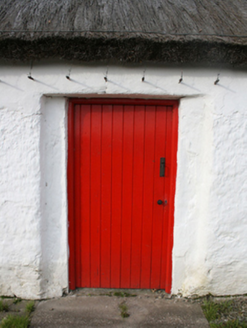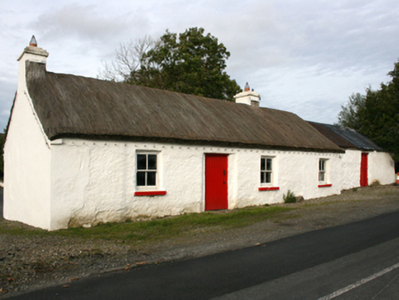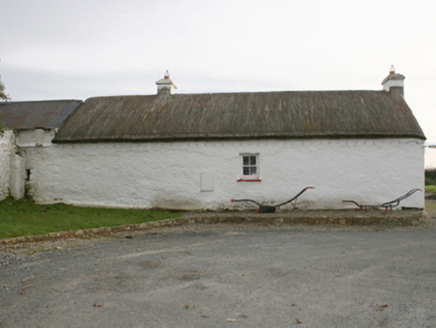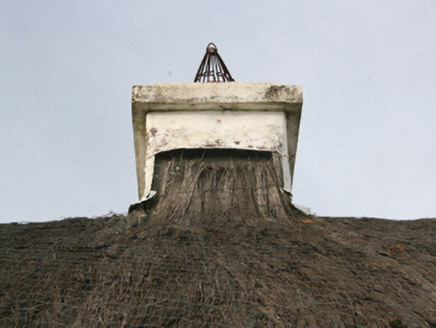Survey Data
Reg No
40801003
Rating
Regional
Categories of Special Interest
Architectural, Technical
Original Use
House
In Use As
House
Date
1840 - 1880
Coordinates
247099, 450350
Date Recorded
11/10/2008
Date Updated
--/--/--
Description
Detached four-bay single-storey vernacular house, built c. 1860, having ingle-bay single-storey outbuilding attached to the east gable end. Pitched rounded rope-and-peg straw thatch roof with wrought-iron stays/pegs to eaves, and with two smooth rendered chimneystacks (one to the west gable end and one offset to the east of centre). Roughcast rendered random rubble stone walls. Square-headed window openings with two-over-two pane horned timber sliding sash windows, and with painted concrete sills. Square-headed door opening, offset to the west side of centre, having smooth rendered reveal, and timber matchboard door with brass furnishings. Fronts directly onto the road to the north-east of Malin.
Appraisal
This appealing and relatively intact example of a vernacular house, of mid-to late nineteenth-century date, retains its early form and character, and is an appealing feature in the landscape to the north-east of Malin. Its integrity is enhanced by the retention of much of its salient fabric including timber sliding sash windows. Modest in scale, it exhibits the simple and functional form of vernacular building in Ireland. The rounded roof is a typical feature of thatched houses located close to the sea in exposed areas in the north-west of Ireland, while the pegs to the eaves were used to tie ropes (and sometimes nets) over the roof to secure it against the prevailing winds, as is the case here at Malin. The largely blank rear elevation is a typical feature of many small-scale vernacular dwellings in rural Ireland. The form of this building and location of the chimneystacks suggests that this building is of the ‘direct entry’ type that is characteristic of the vernacular tradition in north-west Ireland, and also suggests that this building was extended to the west by a bay at some stage. An increasingly rare type, its continued use, and sympathetic maintenance and repairs have safeguarded its character.







